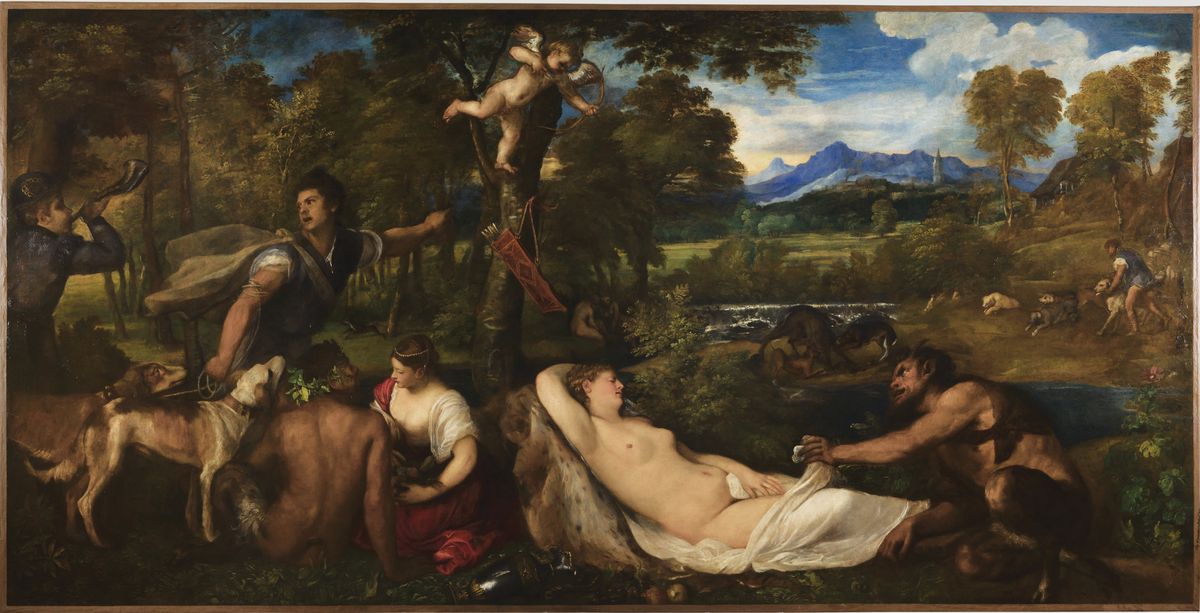Titian’s Jupiter and Antiope (1552), also known as the Pardo Venus, is back on display at the Louvre in Paris after extensive restoration at the Centre de Recherche et de Restauration des Musées de France (C2RMF)—a project that started in 2002. Titian began the 4m by 2m canvas in around 1520 and completed it in 1552 for Philip II of Spain’s hunting lodge in Pardo, near Madrid. It has been in the French royal (now national) collection since 1661. X-ray and infrared examinations revealed layers of multiple restorations from the late 17th to the 20th centuries, as well as many changes made by Titian himself over the decades—the work was initially a single female nude in a landscape. The cleaning, which took place from 2010 to 2013, gradually removed the darkened, oxidised varnish and interventions from 1993 and 1949, uncovering houses and other details. The restoration included filling in gaps, hiding the seams where Titian expanded the canvas and restretching the work on an adjustable frame.


